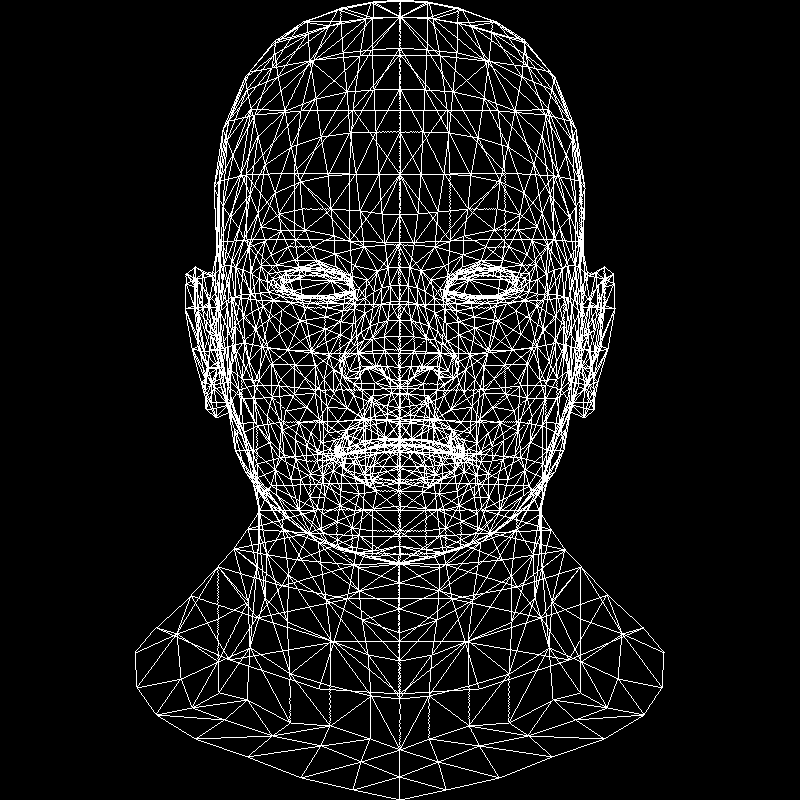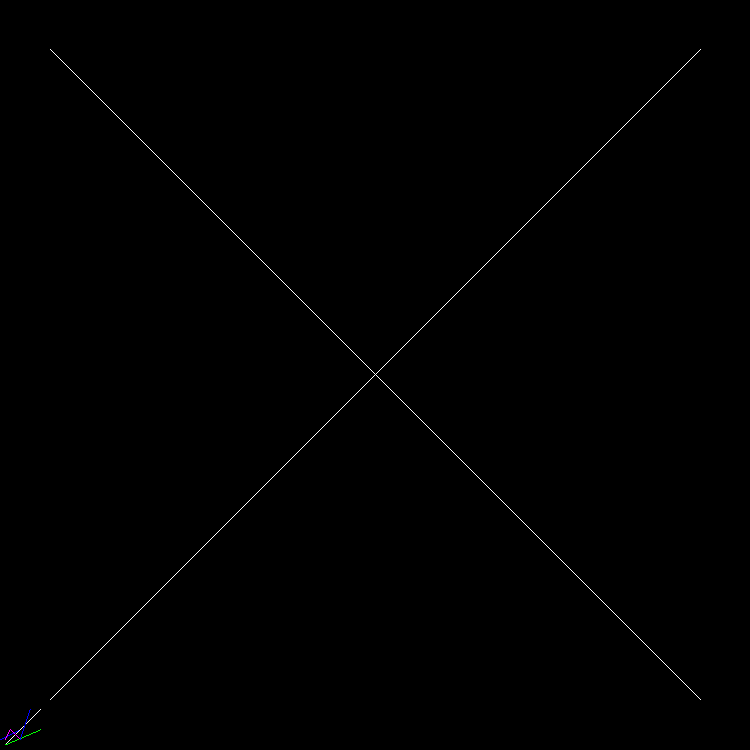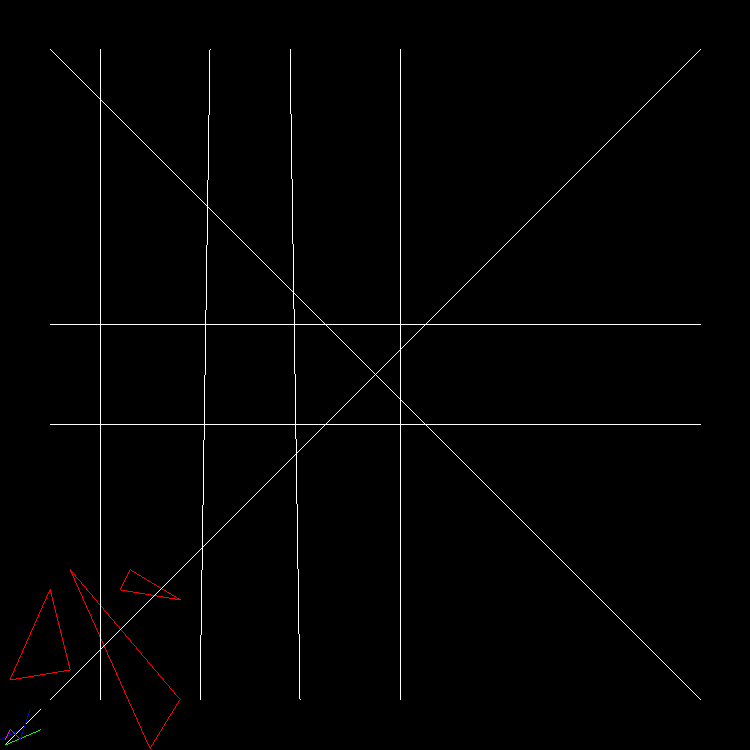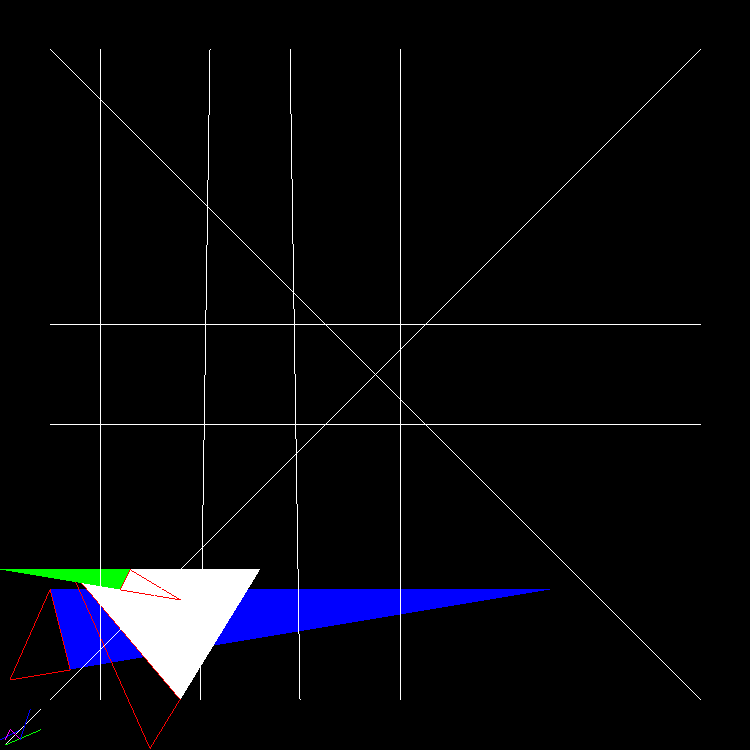I found a cool project on GitHub called Tiny Renderer. It shows you how OpenGL works by making you remake a tiny version of it. IDK how to write C++ code, but I like the idea of making a renderer from scratch, so I'm either going to do it or get stuck on how to run a C++ program.
I'm going to periodically update this whenever I feel like it. I'm not going to worry about keeping this up to date, since the purpose of this project is to learn more about C++ and OpenGL, not write a blog.
Finished lesson 1
While I did copy most of the code from the guy's "snapshots," I did write the code for making the lines all by myself
I tried to do lesson 2. It did not go well
First, I discovered that my line code had a lot of problems, so I had to scratch that and import the guy's line code
Then, I had a lot of problems regarding the triangle
Long story short, I'm taking a break from this project
I'm not taking a break. I WILL NOT LET THE TRIANGLES BEAT ME!
Current plan:
- Figure out how other rendering libraries like this one
- Try to figure a different way of making triangles (the one I tried before was garbage)
EDIT: Turns out, that example graphics library used another graphics library called tkinter If I can find the source code of that, that would work better
I had to take a break
Long story short, a friend recommended I learn linear algebra, since vectors are a big part of how renderers work
I'm also thinging of changing my primary language to Python, as I already know that
I downloaded some libraries to test out, and the next update will detail the results of those experiments
Here are some resources I found
EDIT: I'm going to have to figure out how to install pyTGA safely if I am going to use it. I also need to evaluate my options carefully. I do NOT want to discover halfway though the tutorial that my core graphics library is flawed
Started testing how various parts of this project works with python and matplotlib, cus it is easier
Taking a different direction from what I planned
Long story short, I am completely rewriting the code for myline, so that I understand how it works
I should have tried to make a line function on my own from the start
I finally got the myline code working
Currently, I am only on step 1 of the tutorial
If I looked closely, I could have seen that the algorithm that was used by the teacher had a name that I could have looked up and has lots of information online about it
Oh well, at least I can say that I made my own line algorithm My line drawing algorithm uses y=mx+b
It finds all the values in that equation, then only draws the parts of the equation that is needed
I am proud of my algorithm
HOWEVER, I only have the basic algorithm of step 1.1, I still need to make the rest of the algorithm so it can handle steep lines and stuff like that
Long story short, step 1.2 and 1.3 were completed
Step 1.2:
- Turns out, I already completed this step earlier
- This handles every "step" (every time a pixel is created), and my algorithm already handles this
Step 1.3:
- This step covers handling steep lines and right-to-left lines
- The code needs to be cleaned up a lot, but otherwise I think it is good
The code was cleaned up a little
- Comments were removed
- A bug was patched out regarding steep left-to-right lines
- The original line code was removed (myline is now just called line)
Also, a wireframe version of the face was made with the new line
Lesson 1 is done
Had some IRL stuff that got in the way of this project However, I'm on the right track
I figured out how the basics of how I am going to render a triangle
I did some tests in Python
I figured out how to work on this project portably
Currently, I use CoCalc of I want to work to work on a programming project portablly
However, CoCalc doesn't allow you to install programs, and it didn't have any preinstalled programs that could view TGA images
I found a workaround in the form of the AppImage version of ImageMagick
ImageMagick allows you to convert an image to a different format, and the AppImage version can be ran on CoCalc (after using --appimage-extract)
TLDR, I can work on this project more consistently
On a side note, I did some testing in python
Initially, I just wanted to see if a Jupyter Notebook supported TGA images
Then it spiralled into me trying to recreate the entire renderer so far in Python because I was bored
It didn't end up working, but it made me think about what I have doon so far
For example, why does the line need to be drawn left-to-right? My line algorith is different than the one in the tutorial, so I should test that, right?
Additionally, I am thinking about if turning the lines into classes
I probably won't turn the lines or tiangles or other shapes into classes, but it is still a good idea to think about my code along these lines
I am working on the triangle code, and I want to document what I have done so far
First, the vectors that represent the 3 points of a triangle are sorted from the highest y to lowest y
Then, the triangle code finds the slope and y intercept of the 3 sides before drawing anything
This is where I am at currently
Additionally, I attached a picture to show what I currently have for future reference on what changes
I got a cool glitch
I'm don't even know how this went so perfectly wrong
I almost have the triangle code working
All I need to do is figure out why the triangle doesn't cover the entire area
It probably is an off by one error
I am having a minor bug that is causing triangles to be drawn in a weird way
It has to with the way vectors are inputed into a triangle
It is easier to look at an example image
I edited the README.md file to fix some formatting issues
- Separated paragraphs by 2 newlines instead of 1
- I did not realize that Markdown requires 2 newlines, because I usually use a Markdown editor like Obsidian instead of a TUI editor like Vim
- Convert all TGA images into PNG images
- I have been wanting to do this ever since I learned about ImageMagick, now was just the most convenient time








